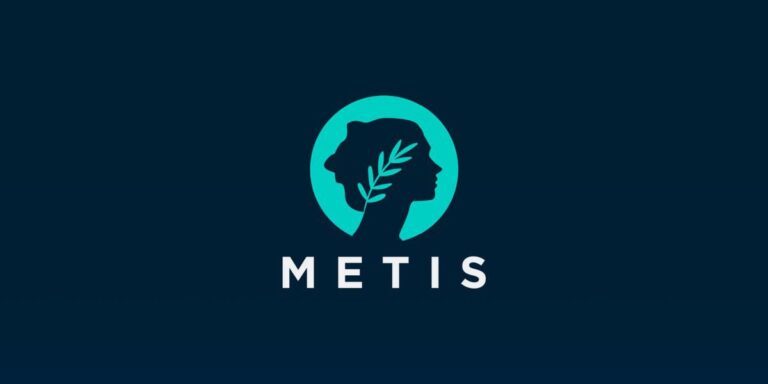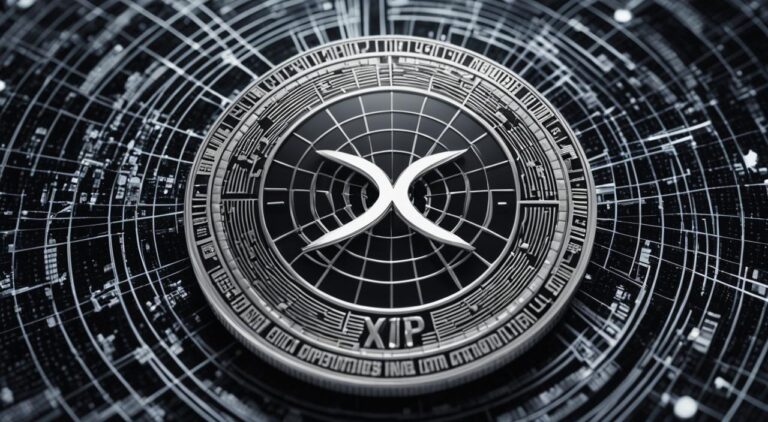What is Avalanche (AVAX) – The Ultimate Guide to Fast, Scalable Crypto Blockchain!

What is Avalanche (AVAX)
Avalanche is a decentralized platform that utilizes a unique architecture consisting of three interconnected blockchains: the X-Chain, C-Chain, and P-Chain. The AVAX decentralized platform offers faster transaction processing and increased scalability compared to other cryptocurrencies.
Key Takeaways:
- Avalanche is a decentralized platform that offers faster transaction processing and increased scalability compared to other cryptocurrencies.
- The AVAX token is the native cryptocurrency of the Avalanche ecosystem, serving as transaction fees, staking, and governance participation.
- Avalanche’s unique consensus algorithm, known as Avalanche consensus, enables fast consensus and high throughput.
- Avalanche is designed to be smart contract-capable, allowing developers to build decentralized applications on its blockchain.
- Avalanche is known for its high scalability, lower transaction fees, and interoperability, making it an attractive option for real-world applications.
Avalanche, launched in 2020 by Ava Labs, is a decentralized platform that introduces a new paradigm in blockchain technology. Its primary focus is to provide a faster, more secure, and more efficient way of processing transactions. Unlike other cryptocurrencies, Avalanche is designed to be smart contract-capable, enabling developers to build decentralized applications (dApps) on its blockchain.
At the core of Avalanche’s architecture is its unique consensus algorithm, the Avalanche consensus. This consensus algorithm enables the network to achieve consensus on the state of the blockchain quickly and efficiently, resulting in high throughput and near-instant transaction finality.
The AVAX token, the native cryptocurrency of the Avalanche ecosystem, plays a crucial role in the network. It serves as a means of transaction fees, staking, and participating in network governance. The AVAX token has gained recognition for its value and utility, attracting investors and users alike.
Avalanche stands out with its high scalability, capable of processing thousands of transactions per second, and ability to offer lower transaction fees compared to platforms like Ethereum. With its interoperability, developers can also seamlessly connect Avalanche to other networks, expanding cross-chain compatibility and integration possibilities.
Throughout this guide, we will explore the inner workings of Avalanche, its consensus protocols, interconnected blockchains, subnets, and its various real-world applications. Get ready to unlock the full potential of Avalanche and discover how it can revolutionize the world of cryptocurrencies!
But first, let’s take a closer look at how Avalanche works and the different components that make this groundbreaking platform tick.
How does Avalanche work?
Avalanche is a decentralized platform that utilizes a unique architecture consisting of three interconnected blockchains: the X-Chain, C-Chain, and P-Chain. Each chain serves a specific purpose within the Avalanche ecosystem, contributing to scalability, interoperability, and user-friendliness.
X-Chain
The X-Chain is responsible for creating and managing assets on the Avalanche network. It is where users can issue and trade digital assets, including cryptocurrencies and tokens. The X-Chain enables fast and efficient asset transfers, making Avalanche a suitable platform for various applications.
C-Chain
The C-Chain, short for Contract Chain, facilitates the creation and execution of smart contracts on Avalanche. It supports popular standards such as ERC-20 tokens and non-fungible tokens (NFTs). The C-Chain plays a crucial role in enabling decentralized finance (DeFi) applications and expanding the functionality of the Avalanche network.
P-Chain
The P-Chain, also known as the Platform Chain, coordinates validators and ensures the security and integrity of the Avalanche network. It operates as the primary chain for the Avalanche protocol. The P-Chain is responsible for reaching consensus and maintaining the overall network stability, making it an essential component of the Avalanche ecosystem.
Avalanche utilizes two consensus protocols: the Avalanche consensus protocol and the Snowman consensus protocol. These protocols enable the efficient processing of transactions and enhance network security.
The Avalanche consensus protocol utilizes a novel approach to achieve consensus in a decentralized manner. It relies on a voting-based system that enables nodes to reach agreement on the status of transactions and the validity of the network. This consensus mechanism ensures the efficient and secure operation of the Avalanche network.
The Snowman consensus protocol complements the Avalanche consensus protocol by providing an additional layer of security. It helps protect the network against potential attacks and ensures the integrity of the blockchain. The combination of these two protocols enhances the overall reliability of the Avalanche network.
The three-blockchain structure of Avalanche, combined with the Avalanche consensus protocol and the Snowman consensus protocol, allows for high scalability, interoperability, and efficiency. This makes Avalanche a robust and innovative platform for various blockchain applications.
| Blockchain | Description |
|---|---|
| X-Chain | Responsible for creating and managing assets on the Avalanche network. |
| C-Chain | Facilitates the creation and execution of smart contracts on Avalanche. |
| P-Chain | Coordinates validators and ensures the security and integrity of the Avalanche network. |
What are AVAX Token subnets?
Subnets in Avalanche allow developers to create customized blockchains with specific rules, regulations, and functionalities. Subnets can be used for various purposes, including private enterprise blockchains, government or regulatory-compliant blockchains, gaming networks, and decentralized finance (DeFi) ecosystems.
Each subnet within the Avalanche network operates independently with its governance model, providing flexibility and adaptability for different use cases. Subnets can validate multiple blockchains, enhancing security and decentralization within the ecosystem.
Subnets provide interoperability within the Avalanche ecosystem, enabling communication and collaboration between different subnets and the Primary Network. This interoperability allows for the seamless transfer of assets, data, and information between subnets, promoting a connected and efficient network.
Subnet governance models are crucial in decision-making and protocol upgrades within each subnet. By having their own governance rules, subnets can collaborate and coordinate with other subnets while maintaining their autonomy.
The subnet validation process ensures the accuracy and integrity of transactions within each subnet. Validators within a subnet are responsible for validating and verifying the transactions, ensuring consensus and security.
Overall, subnets provide a flexible and scalable framework for developers and organizations to build customized blockchains within the Avalanche ecosystem. With their governance models and interoperability, subnets enable a wide range of applications and use cases, contributing to the growth and innovation of the Avalanche network.
Subnets in Avalanche
| Use Case | Examples |
|---|---|
| Private enterprise blockchains | Customized blockchains for businesses and organizations |
| Government or regulatory-compliant blockchains | Blockchain solutions for government agencies and regulatory bodies |
| Gaming networks | Blockchain-based gaming platforms and networks |
| Decentralized finance (DeFi) ecosystems | DeFi protocols, decentralized exchanges, and lending platforms |

Advantages of Avalanche
Avalanche offers several advantages, making it a standout blockchain platform in the crypto industry. Let’s delve into the key advantages:
1. High Transaction Speed
Avalanche boasts an impressive transaction speed, processing up to 4,500 transactions per second. This lightning-fast speed ensures quick confirmation and settlement of transactions, enabling users to enjoy a seamless and efficient experience.
2. Low Transaction Fees
One of the notable advantages of Avalanche is its low transaction fees. With fees ranging from just $0.001 to $0.005 per transaction, Avalanche offers cost-effective transactions compared to other blockchain platforms.
3. Interoperability
Avalanche supports interoperability with other blockchains, allowing for the seamless transfer of assets and data. This interoperability enables developers and users to leverage Avalanche’s capabilities while connecting to other networks, expanding the reach and functionality of their applications.
4. Decentralized Finance (DeFi)
Avalanche is an ideal platform for decentralized finance (DeFi) applications. Its high throughput and low fees make it conducive for various DeFi protocols, such as decentralized exchanges, lending platforms, and yield farming. Developers and users can harness the power of Avalanche to create innovative DeFi solutions.
5. Non-Fungible Tokens (NFTs) and Gaming
Avalanche provides an excellent environment for creating and trading non-fungible tokens (NFTs) and gaming applications. The platform’s high transaction speed and low fees make it suitable for handling the high volume of transactions in the NFT and gaming sectors. Developers and users can explore new possibilities in these exciting areas.
Overall, Avalanche’s advantages of high transaction speed, low transaction fees, interoperability, and suitability for DeFi, NFTs, and gaming make it a compelling choice for blockchain enthusiasts and developers alike.
| Advantages | Description |
|---|---|
| High Transaction Speed | Avalanche processes up to 4,500 transactions per second. |
| Low Transaction Fees | Avalanche offers cost-effective transactions with fees ranging from $0.001 to $0.005. |
| Interoperability | Avalanche seamlessly connects with other blockchains, allowing for asset and data transfers. |
| Decentralized Finance (DeFi) | Avalanche is well-suited for various DeFi applications, including decentralized exchanges and lending platforms. |
| Non-Fungible Tokens (NFTs) and Gaming | Avalanche facilitates the creation and trading of NFTs and gaming applications due to its high transaction speed and low fees. |
Use Cases of Avalanche (AVAX)
Avalanche (AVAX), with its high transaction speed and low fees, has a wide range of use cases across various industries. Let’s explore some of the key applications:
1. Payments and Micropayments
Avalanche’s fast transaction processing and low fees are ideal for payments and micropayments. Whether it’s small everyday transactions or cross-border payments, Avalanche provides a quick and cost-effective solution.
2. Decentralized Finance (DeFi)
Avalanche offers a robust platform for decentralized finance (DeFi) applications. It supports decentralized exchanges, lending platforms, and stablecoin issuance, facilitating financial services without intermediaries and giving users greater control over their assets.
3. Non-Fungible Tokens (NFTs) and Gaming
Avalanche is well-suited for non-fungible tokens (NFTs) and gaming applications. Its high throughput enables seamless trading and issuance of NFTs, while its low transaction fees make it attractive for gaming platforms requiring high transaction volumes.
4. Supply Chain Management
Avalanche’s capability to process many transactions quickly and its interoperability features make it suitable for supply chain management. It can track and manage goods and services, ensuring transparency and efficiency throughout the supply chain.
These are just a few examples of how Avalanche (AVAX) impacts different industries. Its speed, low fees, and versatility make it a promising platform for various applications.
| Use Case | Description |
|---|---|
| Payments and Micropayments | Enables quick and cost-effective payments |
| Decentralized Finance (DeFi) | Supports DeFi applications like decentralized exchanges, lending platforms, and stablecoin issuance |
| Non-Fungible Tokens (NFTs) and Gaming | Facilitates seamless trading and issuance of NFTs, ideal for gaming platforms |
| Supply Chain Management | Tracks and manages goods and services with transparency and efficiency |
Potential Drawbacks and Challenges
Avalanche, like any other blockchain platform, is not without its potential drawbacks and challenges. It faces competition from well-established blockchain platforms such as Ethereum, Polkadot, and Binance Smart Chain. These platforms have already garnered significant user bases and developer communities, making it challenging for Avalanche to compete in adoption and network effects.
Network security is another area of concern. While Avalanche has not experienced any major security breaches, the ever-evolving threat landscape requires continuous vigilance to ensure the platform’s robustness and integrity. As the value and popularity of Avalanche grow, malicious actors may target the network, necessitating robust security measures to protect user funds and data.
“The fast and efficient transaction processing of Avalanche has garnered attention, but it’s crucial to remember the importance of network security in maintaining user trust and confidence. As the platform expands, it must prioritize and invest in advanced security protocols to deter potential attacks and safeguard user assets.”– Crypto Security Expert
Regulatory challenges are also a factor to consider. Governments and financial institutions across the globe are actively exploring ways to regulate cryptocurrencies and the underlying blockchain technology. As Avalanche gains prominence, it may face regulatory scrutiny and potentially navigate complex compliance requirements, which could impact its growth and usability in certain jurisdictions.
Moreover, critics have raised concerns about the degree of centralization in Avalanche. While the platform takes measures to prevent centralization, such as the involvement of validators and subnets, there are still discussions and debates surrounding power distribution and decision-making authority within the ecosystem. Striking the right balance between decentralization and practicality remains an ongoing challenge.
Comparative Table: Avalanche and Competing Blockchain Platforms
| Blockchain Platform | Advantages | Disadvantages |
|---|---|---|
| Avalanche |
|
|
| Ethereum |
|
|
| Polkadot |
|
|
| Binance Smart Chain |
|
|
It’s important to conduct thorough research and evaluate each blockchain platform’s specific advantages and disadvantages before making any investment or development decisions. While Avalanche possesses unique strengths, it must address these potential drawbacks and challenges to solidify its position in the highly competitive blockchain landscape.
Further Development and Innovation
Avalanche is committed to constant innovation and the advancement of its projects. The dedicated teams behind Avalanche continuously work on product development and improvement, ensuring the platform remains at the forefront of the blockchain industry.
One of the main focuses of Avalanche’s development efforts is compatibility with other networks. The teams are actively working on establishing bridges between Avalanche and other prominent networks such as Ethereum and Bitcoin. These bridges enable seamless information, data, and assets transfer across different blockchain platforms, expanding user possibilities and enhancing interoperability.
The future of Avalanche looks promising, with increasing interest from both developers and users. The continuous development and innovation within the Avalanche ecosystem pave the way for exciting new applications and use cases. The compatibility with other networks opens up a world of possibilities and creates a more connected and decentralized future of blockchain technology.
With further development and innovation, Avalanche aims to strengthen its position in the market and drive adoption by offering a reliable and cutting-edge blockchain platform. The commitment to product development and the establishment of compatibility bridges demonstrate the dedication of the Avalanche teams in creating a sustainable and user-friendly ecosystem.
As interest in blockchain technology continues to grow, Avalanche is set to play a significant role in shaping the future of decentralized applications, financial systems, and various other industries. Developers and users can look forward to a dynamic and ever-evolving ecosystem that pushes the boundaries of what is possible with blockchain technology.
Where to Buy AVAX
If you’re interested in buying AVAX, you can find it on several cryptocurrency exchange platforms. Here are three popular options:
- Binance
Binance is a well-known and secure platform that offers a wide range of trading options. It has a large user base and provides a seamless trading experience. You can easily buy AVAX on Binance and access other cryptocurrencies as well.
- KuCoin
KuCoin is another reputable exchange that offers competitive fees and a diverse selection of cryptocurrencies. It provides a user-friendly interface and supports AVAX trading. If you’re looking for a platform with various options, KuCoin is a good choice.
- Gate.io
Gate.io might be less well-known than Binance and KuCoin, but it offers low trading costs and reliable services. It’s a platform worth considering, especially if you’re looking for cost-effective options for buying AVAX.
Before purchasing AVAX, conducting thorough research and choosing a trusted and reliable platform that meets your specific needs is important. Each exchange has its features, fees, and user experience, so take the time to find the one that aligns with your preferences.
Conclusion
In conclusion, Avalanche (AVAX) is a game-changing blockchain platform that offers exceptional performance, scalability, and interoperability. With its high transaction speed and low fees, Avalanche provides an efficient solution for various applications, including decentralized finance (DeFi), non-fungible tokens (NFTs), gaming, and supply chain management.
Although Avalanche faces competition from other blockchain platforms and potential regulatory challenges, its future looks promising. The platform’s unique three-blockchain structure and commitment to innovation and development positions it for significant growth and adoption in the coming years.
Investors and developers interested in Avalanche should carefully evaluate the platform’s strengths and weaknesses to make informed decisions. As the future of Avalanche unfolds, it is exciting to witness its potential impact on the blockchain industry and the broader adoption of cryptocurrency.
Q: What is Avalanche (AVAX)?
A: Avalanche is a blockchain platform and cryptocurrency that aims to provide a fast, scalable, and decentralized network for building custom decentralized applications and enterprise blockchain deployments in one interoperable, highly scalable ecosystem.
Q: How does Avalanche (AVAX) differ from other cryptocurrencies like Bitcoin or Ethereum?
A: Unlike Bitcoin and Ethereum, Avalanche uses a new consensus protocol to achieve high-throughput without sacrificing decentralization or security. Avalanche’s unique consensus protocol makes it one of the fastest and most efficient platforms in the blockchain space.
Q: What is Avalanche blockchain’s staking mechanism?
A: Avalanche uses a consensus mechanism called Proof-of-Stake (PoS), where AVAX holders can stake their tokens to help secure the network and earn rewards in the process.
Q: How can I buy Avalanche (AVAX) tokens?
A: You can buy AVAX tokens from various cryptocurrency exchanges that support the trading of Avalanche tokens. Simply search for AVAX on the exchange platform of your choice and follow the instructions to make a purchase.
Q: What makes Avalanche’s bridge unique compared to other blockchain networks?
A: Avalanche’s bridge allows users to transfer assets between different blockchain networks in a secure and efficient manner. This interoperability feature is what makes Avalanche’s bridge stand out in the blockchain space.
Q: How can I use Avalanche for trading or investing in AVAX?
A: You can use Avalanche to trade AVAX tokens on supported exchanges or consider investing in AVAX for potential long-term growth and diversification of your cryptocurrency portfolio.
Q: What are the key features that make Avalanche unique?
A: Avalanche’s unique features include its highly scalable network, low fees with AVAX, interoperable ecosystem, and its ability to support custom decentralized applications and enterprise blockchain deployments.
Q: What are the fees associated with using AVAX on the Avalanche blockchain?
A: Fees on the Avalanche blockchain are typically paid in AVAX and are designed to be low, making it cost-effective for users to perform various transactions and interactions within the network.
Q: How can I invest in Avalanche (AVAX) for long-term potential growth?
A: You can invest in Avalanche (AVAX) by purchasing the native token of the Avalanche network from supported exchanges and holding it in a secure wallet for potential long-term growth and participation in the Avalanche ecosystem.
Q: What are the benefits of staking AVAX tokens on the Avalanche network?
A: Staking AVAX tokens on the Avalanche network allows users to help secure the network, participate in governance decisions, and earn rewards for their contributions to the ecosystem.






